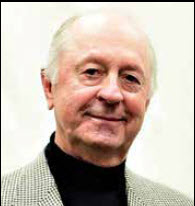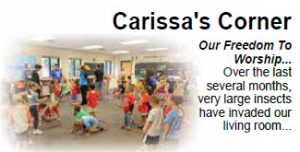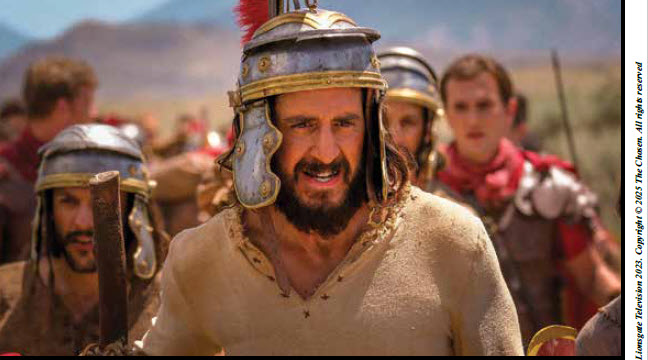 By: Jerry Barksdale
By: Jerry Barksdale
The morning broke cool and clear in the high desert country of Taos, New Mexico. The day held promise.
“Dad, let’s take a trip to Valle Vidal,” said my daughter Shannon. My good friend (and sometimes red-head) Pat and grandson, Joshua were all in. I was eager to return there.
Valle Vidal (Spanish for “valley of life”) is 102,000 acres of pristine wilderness 69 miles north of Taos and inhabited with elk, bear, bison, and bisected by a wild river teaming with cutthroat trout. If God ever vacations, He surely goes there. It’s where I had planned to live in a tepee part time following retirement. I had purchased “Little Red” my devoted Toyota pick-up specifically for that purpose. Shannon helped me select a tepee and I planned to acquire a dog for company and to keep me warm on cold nights.
Then I met Pat. She’s a “Tanner-tested” lady (similar to Good Housekeeping seal) who can cook like a gourmet chef, paint a house, mow grass, and operate a Farm-all tractor. What else does a lazy man need? For several years she has waged an unrelenting battle against ugliness in Athens at her modest beauty shop, The Total Look. If a customer is short of money, Pat will give them a “half look.” She doesn’t cuss much, smoke, drink or use drugs (except Sundrop); is slow to anger; and never throws cups and plates. A fine lady who looks and smells a sight better than a dog. I forgot about the tepee and dog. I’m glad I did.
We drove down a narrow, winding gravel road and across Valle Vidal. In four hours we met fewer than six vehicles. Turquoise sky, blooming mountain flowers and rushing streams took our breath. Such peace and tranquility. Then a loud scream! “EEooow!” Joshua slammed the car door on his hand. Tranquility ended. “There goes his good job at Anasazi Hotel,” I thought.
We emerged back in civilization at tiny Cimarron, a speck of a town on the old Santa Fe Trail. We stopped at the St. James Hotel. Back in the day it was frequented by Jessie James, Bat Masterson and Clay Allison, just to name a few. Numerous bullet holes dot the tin ceiling. Twenty-six killings occurred there. Clay Allison, from Waynesboro, Tennessee, killed several men in the bar. He was discharged from the Confederate Army for psychological problems – “part manical” – but later served in the 9th Tennessee Cavalry and rode with Gen. Nathan Bedford Forrest. Allison always said he never killed a man that didn’t need killing. How many of us can boast of such sterling civic accomplishments?
That evening Pat made pasta, garlic bread and salad, which we washed down with a good red wine. Afterwards, we sat outside where an ancient acequia the Spaniards constructed to irrigate the valley, gurgled past us. We talked as a night breeze rattled leaves on ancient cottonwoods. There was so much love among our little tribe. Since the death of Carol, my children have grown very close to Pat. And it’s good.
Later, we built a fire in the kiva fireplace and temporarily adjourned to the hot tub on the patio. Our fun was interrupted by a woman who appeared out in the night decrying that her husband was allergic to smoke and was choking to death. Not wanting to be responsible for his death, we put out the fire.
Joshua woke at 2 a.m. whimpering with pain in his hand. I gave him two Advils and worried that he wouldn’t be able to return to work that afternoon at the Anasazi Hotel in Santa Fe. He had worked one day before asking for four days off. Not good.
After Joshua returned to Santa Fe, Shannon, Pat and I drove 20 miles north of Taos to San Cristobal, location of the 160-acre D.H. Lawrence Ranch (elev. 8600). Lawrence, a famous English writer, who wrote Lady Chatterley’s Lover, and his wife Frieda came to New Mexico in 1922. They lived in a small, rustic cabin on the ranch where Lawrence wrote. Lady Dorothy Brett, a Lawrence admirer of English nobility, came to the ranch in 1924. The cabin grew too small for the two women and Frieda banned Lady Brett to a tiny closet-size cabin in the back yard. Cat fight? Lawrence died in Venice, France, 1930; and his ashes eventually ended up at the ranch.
One evening we had dinner at the Kyote Club where Shannon and her band performed. Shannon introduced me to Roe, a beautiful woman with long black hair, who is a sixth-grade school teacher. Her father fought with the Philippine Guard when the Japanese overran Manilla during WWII. He, along with others were lined up by an open trench and gunned down. He survived, escaped to the jungle, and fought with the guerillas against the Japanese until Gen. McArthur returned. Roe moved to Taos after her son was killed in a car accident “to find peace,” she told me.
On another evening we went to the Alley Cantina to hear Shannon sing. They play rock’n roll, blues and funk. Shannon is lead vocalist and Dave Kinney plays guitar and harmonica. Rick, keyboard player, is a Taos lawyer who moved there from Beverly Hills. Brendan Devlin, a lederhosen-clad waiter at the Bavarian restaurant during the day, plays lead guitar and sings. He slings his long black hair like he has water in his ears. It drives women crazy. Long hair is stupid. I’m bald and don’t have to go around slinging my head. “Ohhh, he’s so cute,” Pat cooed. “I’m going to take him home.” The little punk.
We headed back to Alabama. I yearned for humidity, ripe tomatoes, and fried okra from our garden on Elk River. I watched as the mountains faded in my rearview mirror and knew I would return to Taos. I always do.
By: Jerry Barksdale









 June 20, 2025
June 20, 2025



